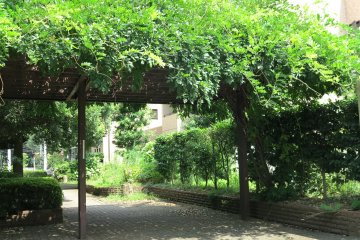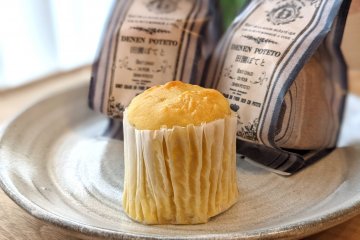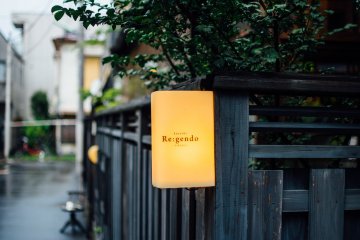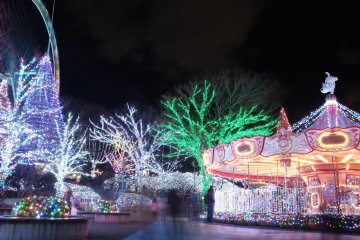
Oakhouse: Social Residence Higashi Koganei
Oakhouse Social Residence Koganei in Tokyo's Koganei suburb is a share house that offers long-term residence to both Japanese and international residents.

Ajinomoto Stadium was Tokyo's official stadium for the 2019 Rugby World Cup. It is easily accessible from Tokyo Station in just 40 minutes. The Ajinomoto Stadium is also a 20-minute drive from Shinjuku Station.
This open-dome stadium can seat almost 50,000 people. It opened in March 2001. The grandstand is divided into two levels, an upper and a lower one. If you get hungry during the game, the stadium has a variety of restaurants serving both Japanese and Western food.
Besides being home to two J-League teams (professional football league in Japan), the stadium is also known as the venue for many other events such as concerts, flea markets, etc.
From Tokyo Station take the JR Yamanote for Shinjuku Station and transfer to the Keio Line. From Tobitakyu Station it’s a 5-minute walk to Ajinomoto Stadium.

Oakhouse Social Residence Koganei in Tokyo's Koganei suburb is a share house that offers long-term residence to both Japanese and international residents.


Harmonica Allee is located in the trendy area of Kichijoji and is a section of local izakaya bars that are only a few minutes' walk from the train station. The alleys of Harmonica Allee are narrow and at the same time full of life. There you can find fashion, local market traders, which are open during the day, as well as izakayas and pubs that can be visited until late at night. Since the 1990s, Harmonica Allee has been very popular, especially among the locals, for its stand-up bars with inexpensive snacks in the late evening. The area was named for the way this tight tangle of restaurants, shops, and bars resembles a harmonica. It can get full quickly, but it definitely never gets uncomfortable!

拥有 40 多年的经验,这家糕点店凭借精湛的技艺赢得了多个奖项。来到这里,不妨用红薯蛋糕、奶酪面包或杏子丹麦面包犒劳您的味蕾。如果您感觉特别饿,他们的全套菜单保证让您满意。

Re:gendo is a cafe, apparel and arts and crafts store found in the quaint backstreets of Nishi-Ogikubo, just a few minutes from the station. It embodies everything about Shimane prefecture, capturing the essence of its history, culture and beauty that help inspire everything on offer here. Located in a spectacular wooden structure, which is said to be around 90 years old, Re:gendo is an homage to Shimane and the staff and owners take great care to display the cultural history of their beloved homeland. It’s a curious space, layed out over two floors. It acts as a thriving restaurant, apparel store, arts and crafts shop and a workshop space which focuses on teaching craftsmanship and culinary skills. The cafe recognizes the nuances involved in Shimane produce such as rice which it uses for its extremely popular, seasonal lunch menus musubi zen and nigiri zen. Musubi zen consists of a main fish or meat dish while nigiri showcases vegetable nigiri sushi. Both courses come with accompaniments including vegetables, pickles and miso soup. The ingredients at Re:gendo are sourced locally in Toyo or from Shimane. The cafe also does a fine collection of sweets (Shimane folk are particularly fond of wagashi or traditional Japanese confectionery). The apparel and crafts section, situated on the first floor adjacent to the cafe includes a range of arts and crafts from Shimane and a curated fashion line which uses a type of non-toxic dye from Shimane so it’s safer for pregnant women or customers with allergies. The second floor hosts regular workshops about local craftsmanship and cuisine. Visitors from all over the world come and participate in workshops and learn the intricacies involved in Shimane’s abundance of specialities. Re:gendo acts, then, as a local hub and a popular attraction for many of Tokyo’s Shimane transplants. Refined, cultured, respectful of ancient traditions and friendly, it should be considered an essential stop on any visit to Nishi-Ogikubo.

Hana Biyori (HANA・BIYORI), nestled next to the Yomiuriland amusement park in Inagi City, Tokyo, is an innovative flower park that offers a refreshing blend of nature and modern attractions. This park features a variety of seasonal gardens and floral displays, from vibrant cherry blossoms in spring to the rich colors of chrysanthemums in the fall. One of Hana Biyori’s standout features is its focus on sustainable practices, including natural irrigation systems and a variety of locally sourced products. The park’s dining area showcases handcrafted furniture made by wood salvaged from trees damaged by typhoons at Yomiuriland facilities. It also exclusively uses well water from the Tama Hills to nourish its plants, streams, and waterfalls. In addition to the breathtaking plant life, Hana Biyori offers workshops, seasonal events, and interactive art installations. Whether you’re looking to connect with nature, learn about sustainable gardening, or simply enjoy the beauty of seasonal flowers, HANA・BIYORI offers an experience that is both educational and visually captivating.

Yomiuri Land is a Japanese theme park that first opened in 1964. It is located on a mountainside and features rides such as roller coasters and water slides. It houses the Yomiuri Giants Stadium, one of the training fields for the Yomiuri Giants baseball team, and was the main training ground before the Tokyo Dome was completed. It is operated by the Yomiuri Group, the parent company of the Yomiuri Shimbun media conglomerate. A bathhouse was added to attract more seniors. The Yomiuri Land is also host to the largest illumination in the Kanto region, "Jewellumination". Popular night-only shows and attractions include some of the largest fountain shows in the country and a Ferris wheel with panoramic views of the cityscape at night.

The Ghibli Museum is Japan’s must-see spot for fans of the highly acclaimed films produced by Hayao Miyazaki. Opened in 2001, the museum welcomes excited visitors to the peaceful, Ghibli-esque area of Mitaka, Tokyo. Visitor access is through reservation only, usually at least 1-3 months in advance and tickets can sell out quickly. Director Hayao Miyazaki envisioned the Ghibli Museum to be a place where everyone, not just fans of Studio Ghibli, can relax, enjoy, and discover new insights into animation. The museum’s motto: “Let’s lose our way, together”—is a slogan that perfectly conveys the spirit of the museum. Upon entering the museum, the friendly staff will trade your paper ticket for an extra special ticket—an actual cell frame from one of the Studio Ghibli films. The estate design was influenced by European architecture and is accented with symbols and landmarks from the beloved Ghibli films. Visitors are taken on a self-guided tour through Miyazaki’s creation process, through the permanent exhibits showcasing replicas of his desk, actual storyboards, and colouring cells. Special temporary exhibitions are held from time to time, usually exploring a particular theme or creative process. Be sure to visit the Saturn Theater to enjoy exclusive screenings of short animated films that are only shown at the Ghibli Museum. Although the films are not subtitled, the stories are relatively easy to follow and aren’t usually dialogue-centric. Children 12 and under can enjoy playing on a fluffy Cat Bus from “My Neighbour Totoro”. The official museum shop, Mama Aiuto!, sells original museum memorabilia and souvenirs for you to take home. The picturesque Straw Hat Cafe offers a place for visitors to enjoy snacks and desserts whilst sitting among the natural scenery of Inokashira Park. Note that photography is prohibited inside the museum but is welcome at the outdoor areas, such as the rooftop garden. Reserve your tickets early, either through your local JTB Group sales counters, online via Lawson Ticket. Entry into the museum is staggered by time to prevent the indoor exhibits from overcrowding. Closed on most Tuesdays but see the museum calendar for exceptions to this. They are also closed around the year-end as well as periodic maintenance (closed 4–18 Nov 2025).